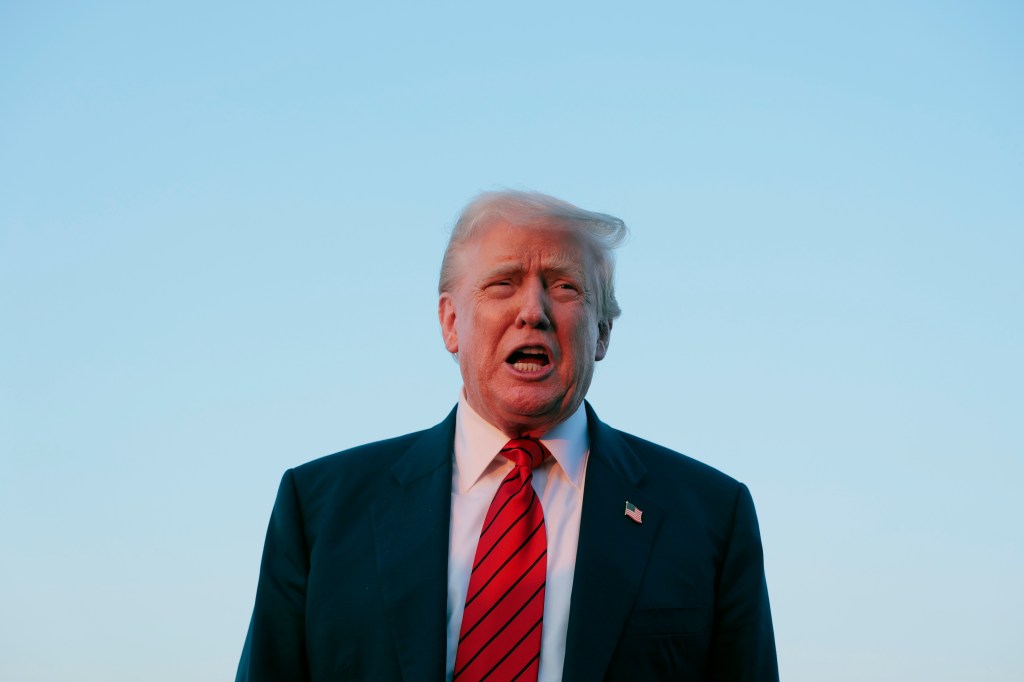Donald Trump again vowed to make changes at the Smithsonian Institution, this time complaining that its museums have become too woke and that “everything discussed is how horrible our Country is, how bad Slavery was, and how unaccomplished the downtrodden have been.”
In a Truth Social post on Tuesday, Trump wrote, “The Museums throughout Washington, but all over the Country are, essentially, the last remaining segment of ‘WOKE.’ The Smithsonian is OUT OF CONTROL, where everything discussed is how horrible our Country is, how bad Slavery was, and how unaccomplished the downtrodden have been — Nothing about Success, nothing about Brightness, nothing about the Future. We are not going to allow this to happen, and I have instructed my attorneys to go through the Museums, and start the exact same process that has been done with Colleges and Universities where tremendous progress has been made. This Country cannot be WOKE, because WOKE IS BROKE. We have the ‘HOTTEST’ Country in the World, and we want people to talk about it, including in our Museums.”
Earlier this month, White House officials sent a letter to Smithsonian secretary Lonnie Bunch, announcing a comprehensive review of museums and exhibitions in order to “ensure alignment with the President’s directive to celebrate American exceptionalism, remove divisive or partisan narratives, and restore confidence in our shared cultural institutions.”
It’s unclear what specifically Trump was referring to, particularly when it comes to the Smithsonian’s National Museum of American History, a wide-ranging museum that includes artifacts ranging from a George Washington sculpture to the Greensboro lunch counter to C3PO and R2D2.
The main entrance leads to one of its most patriotic famous artifacts, the Star Spangled Banner that inspired Francis Scott Key to write the poem in 1814 that would become the National Anthem. The other main entrance to the museum, on Constitution Avenue, leads to displays of America’s successes, including its progress in transportation, industry and technology, as well as one on the value of money.
The National Museum of African American History and Culture naturally has substantial exhibits on slavery, as the entire complex was set up to share the “unvarnished truth” while highlighting “the contributions, struggles, and triumphs that have shaped our nation,” per the museum.
The term “woke,” meanwhile, has come to have many different meanings, used by many in the GOP to deride progressives on issues race and diversity and climate change and the environment. As he was campaigning in 2023, Trump even said, “I don’t like the term woke, because I hear woke, woke, woke. It’s just a term they use. Half the people can’t define it. They don’t know what it is.” At the time, Trump’s primary rival, Ron DeSantis, had based much of his campaign on an “anti-woke” message.
Trump does not control the Smithsonian; it is run by a Board of Regents that includes the chief justice, the vice president, and six members of Congress split between the parties, including three members of the U.S. Senate and three members of the House of Representatives. The board also includes nine citizens, who include figures such as Michael Govan and Michael Lynton.
The Smithsonian previously asserted its independence, after Trump sought to fire Kim Sajet, the director of the National Portrait Gallery. Sajet later resigned.
“The board is entrusted with the governance and independence of the Institution, and the board appoints a secretary to manage the institution. All personnel decisions are made by and subject to the direction of the secretary, with oversight by the board. Lonnie G. Bunch, the secretary, has the support of the Board of Regents in his authority and management of the Smithsonian.”
But in the statement, the Smithsonian is “a beacon of scholarship free from political or partisan influence, and we recognize that our institution can and must do more to further these foundational values.” The board of regents directed Bunch to “articulate specific expectations to museum directors and staff regarding content in Smithsonian museums.”

